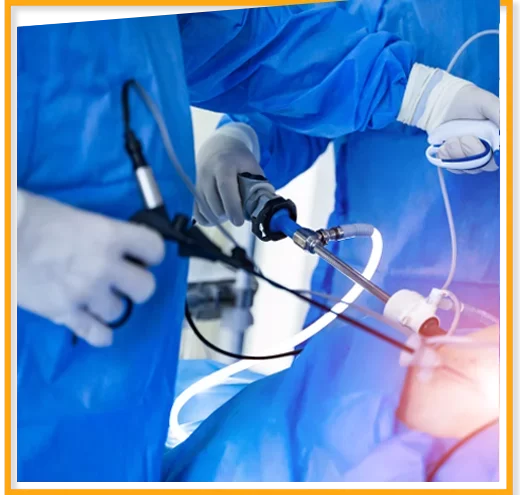Inguinal hernia is the most prevalent hernia among all other hernias. As per research, it is estimated that around 25 percent of males will experience inguinal hernia while 2 percent of females will be affected by this hernia once in their lifetime. Inguinal hernias are not dangerous however if neglected can cause serious life-threatening complications. Consequently, it is advised to get it checked and treated by a skilled surgeon as per their advice. If you are living in the Fort Worth region, you can consult a reputable hernia or general surgeon who performs minimally invasive surgeries for hernia repair. But before that, read on to know more about inguinal hernia as a medical condition.
What is Inguinal Hernia?
Everybody has an inguinal canal. Male testes typically pass via the inguinal canal a few weeks or so before birth. In females, the round ligament of the uterus passes through each canal. An inguinal hernia develops in the lower abdomen cavity inside the inguinal canal where the groin is placed. A weak tissue deliberately moves into a delicate spot in the groin area in the left or right inguinal canal leading to a bulgy protruding skin. Those with inguinal hernia experience pain while moving. Since this type of hernia leads to a minor and sometimes complete lack of symptoms, many people choose not to seek treatment. However, timely medical attention can lessen discomfort and avoid future protrusion.
Types of Inguinal Hernia
● Direct Inguinal Hernia
When a tissue directly passes into the inguinal canal through weakened walls in the lower abdomen cavity, it is called a direct inguinal hernia. This is most prevalent in adults as with age, muscles weaken.
● Indirect Inguinal Hernia
An indirect inguinal hernia happens mostly at birth due to a defect. It can happen to both men and women, but men are more frequently affected. This is due to the fact that the male testicle originates inside the lower abdomen and travels to the scrotum through a hole in the groin region. An indirect inguinal hernia forms if this opening does not close at birth. This kind of hernia can happen in women if the uterus is connected to the inguinal canal as a result of a connective tissue weakness in the lower abdomen.
● Incarcerated Inguinal Hernia
Incarcerated inguinal hernia is a type of hernia where a part of the organ or the tissue is stubborn and does not move when pushed inside the abdomen. This is generally considered an emergency and needs to be repaired by surgeons immediately.
● Strangulated Inguinal Hernia
This is also a serious hernia, but it requires immediate surgery. In this hernia, the bowel or small intestine protrudes inside the groin area blocking the blood supply to the intestine. The symptoms are more severe and noticeable in this hernia.
Symptoms of Inguinal Hernia
Signs and symptoms of an inguinal hernia include:
- a bulge on either side of your pubic bone that is more noticeable when you’re standing up, particularly if you cough or strain;
- aching or scorching pain at the bulge;
- discomfort or pain in your groin, particularly when crouching, coughing, or lifting objects
- a feeling of heaviness or dragging in your groin;
- a discomfort or weakness in your groin;
- an occasional descent of a projecting intestine into the scrotum causing pain and swelling around the testicles.
Symptoms of incarcerated inguinal hernia are more serious and severe and may include:
- Fever
- Bloody stools
- Fatigue
- Constipation
- Darkening in the groin area
- Sudden acute pains
- Nausea
- Vomiting
- Increased heartbeat
Causes of Inguinal Hernia
An inguinal hernia is mostly caused due to a weakness or opening in your lower abdominal wall that permits abdominal tissue to pass through in the inguinal canal. This may be caused by a variety of factors including:
- a hole or weak area that exists from conception
- congenital variations in your connective tissue’s tensile strength (collagen)
- a gap or weak region left over from prior abdominal surgery
- persistent sneezing or coughing
- long-term straining to urinate or defecate
- regular hard physical activity or manual labor
- many pregnancies and childbearing years
- jobs where standing is required for long periods
- the internal strain brought on by persistent obesity
- normal tissue aging and deterioration
Treatment of Inguinal Hernia
For an inguinal hernia, there are two basic surgical approaches:
- Open repair – a large incision is made through the skin. The surgeon moves the hernia within the abdomen and closes the abdominal wall with stitches. To reinforce the closure and lower the likelihood of the hernia returning, a mesh may be used.
- Traditional or robot-assisted laparoscopic repair – A few small incisions are made in this surgery. A thin scope with a tiny camera is placed through one incision and tiny instruments are navigated through the other incisions around the hernia region. To repair the hernia, the surgeon handles the instruments through the ports and pushes the hernia back in its place. In robotic laparoscope repair, the surgeon uses a console to control robotic arms and conduct the surgery. Mesh is employed to strengthen the weakened walls in such repairs. Compared to open repair, recovery time is faster, pain is less, and scarring is minimal in these minimally invasive techniques.
Conclusion
Hernias cause great discomfort and easiness hindering normal, daily routine activities, and sometimes even causing serious implications as we mentioned in the case of strangulated and incarcerated hernia. If you have noticed any of the above-mentioned symptoms, quickly get it checked by a hernia surgeon. If you are living in Fort Worth or Dallas, Texas, consult a skilled hernia surgeon who is a specialist in treating inguinal hernias, and has a rich record of successful inguinal hernia surgeries in the Dallas-Fort Worth region.

